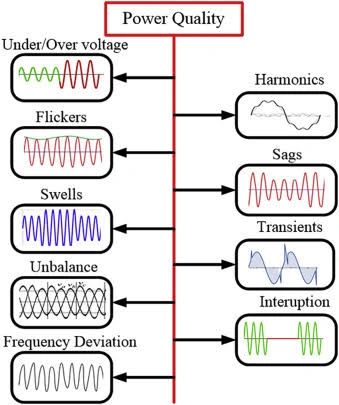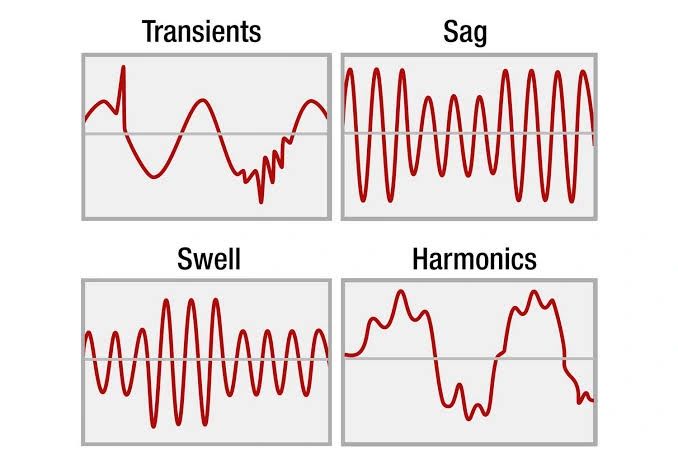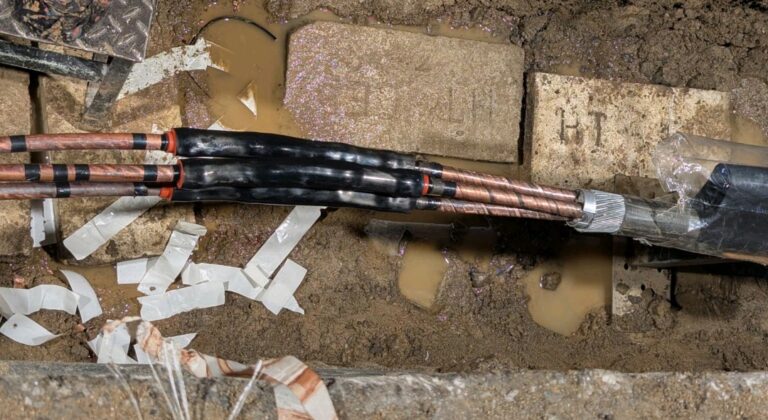
Understanding Power Quality and Its Key Components
In the ever-evolving energy landscape, power quality has become a critical factor for both consumers and industries alike.
The term refers to the consistency and stability of electrical power that flows through the grid to end users. Power quality issues can have significant impacts on system performance, safety, operational costs, and the lifespan of equipment.The image below highlights some of the most prevalent power quality disturbances:-
1. Under/Over Voltage:-
Voltage deviations from the standard operational levels can lead to inefficient equipment operation, electrical faults, and sometimes permanent damage to sensitive devices. Overvoltage can overheat components, while undervoltage can cause devices to underperform
2. Flickers:-
These are small, repeated voltage fluctuations that can cause lighting flickers or instability in sensitive electronics. Flickers are particularly problematic in industries reliant on continuous, stable lighting or equipment.
3. Swells:-
A short-term rise in voltage that typically lasts a few seconds, caused by sudden changes in load or faults in the grid. Voltage swells can overstress equipment, leading to early wear and potential failures.
4. Unbalance:-
Occurs when the voltage or current is not evenly distributed among the phases in a three-phase system. Unbalance leads to overheating and reduced efficiency in motors and generators, and it can be especially harmful to industrial equipment designed for balanced loads.
5. Frequency Deviation:-
Power systems rely on a stable frequency (e.g., 50 Hz or 60 Hz) for optimal operation. Deviations from this frequency can disrupt synchronous machines, create resonance problems, and cause damage to power system components over time.
6. Harmonics:-
Harmonic distortions are deviations from the ideal sinusoidal waveforms caused by non-linear loads such as variable frequency drives (VFDs), rectifiers, and other modern electronics. Harmonics can lead to overheating in transformers and capacitors, reduced system efficiency, and increased energy losses.
7. Sags:-
These are short-term voltage dips lasting from milliseconds to a few seconds, often caused by sudden high-demand loads or faults in the system. Voltage sags can severely impact sensitive equipment, causing unexpected shutdowns and production losses.
8. Transients:-
Sudden, short-duration spikes in voltage that result from lightning strikes, switching events, or sudden load changes. Transients can cause immediate damage to electrical components, leading to equipment failure or data loss in critical systems.
9. Interruptions:-
These occur when there is a complete loss of power for a specified time. Interruptions can vary in duration, from milliseconds (momentary interruptions) to several hours (sustained interruptions), and can severely disrupt processes, especially in industries where continuous operation is critical.

